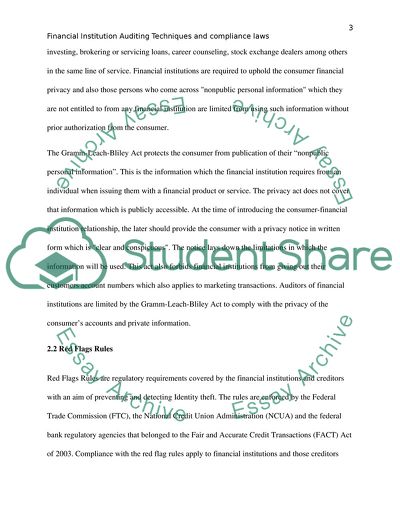Cite this document
(Financial Institution Auditing Techniques and Compliance Laws Coursework Example | Topics and Well Written Essays - 2500 words, n.d.)
Financial Institution Auditing Techniques and Compliance Laws Coursework Example | Topics and Well Written Essays - 2500 words. https://studentshare.org/information-technology/1812765-it-security-auditing-financial-institution-auditing-tools-and-techniques
Financial Institution Auditing Techniques and Compliance Laws Coursework Example | Topics and Well Written Essays - 2500 words. https://studentshare.org/information-technology/1812765-it-security-auditing-financial-institution-auditing-tools-and-techniques
(Financial Institution Auditing Techniques and Compliance Laws Coursework Example | Topics and Well Written Essays - 2500 Words)
Financial Institution Auditing Techniques and Compliance Laws Coursework Example | Topics and Well Written Essays - 2500 Words. https://studentshare.org/information-technology/1812765-it-security-auditing-financial-institution-auditing-tools-and-techniques.
Financial Institution Auditing Techniques and Compliance Laws Coursework Example | Topics and Well Written Essays - 2500 Words. https://studentshare.org/information-technology/1812765-it-security-auditing-financial-institution-auditing-tools-and-techniques.
“Financial Institution Auditing Techniques and Compliance Laws Coursework Example | Topics and Well Written Essays - 2500 Words”. https://studentshare.org/information-technology/1812765-it-security-auditing-financial-institution-auditing-tools-and-techniques.


